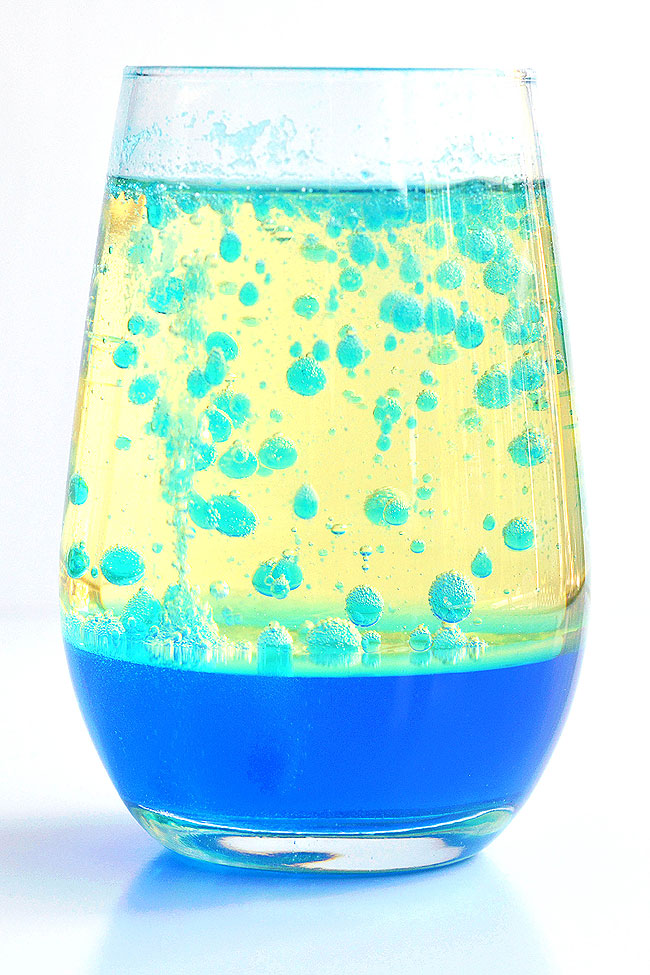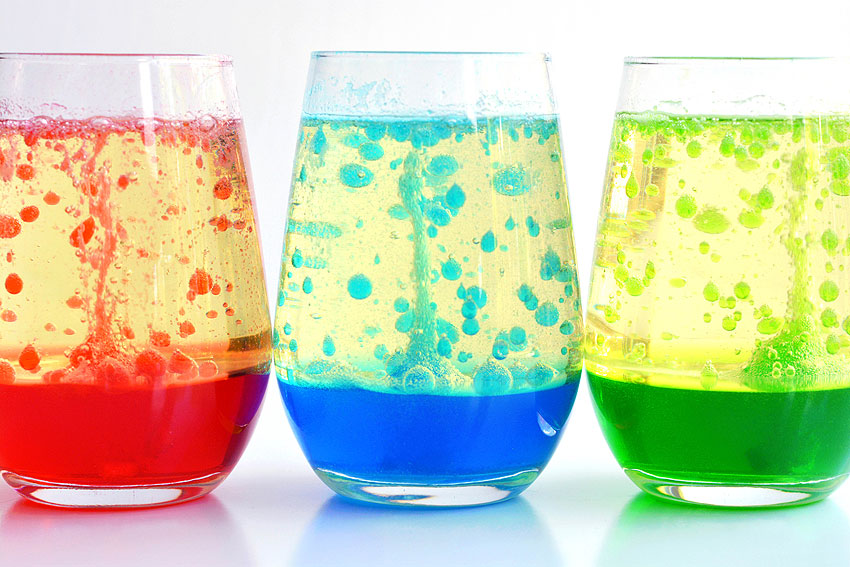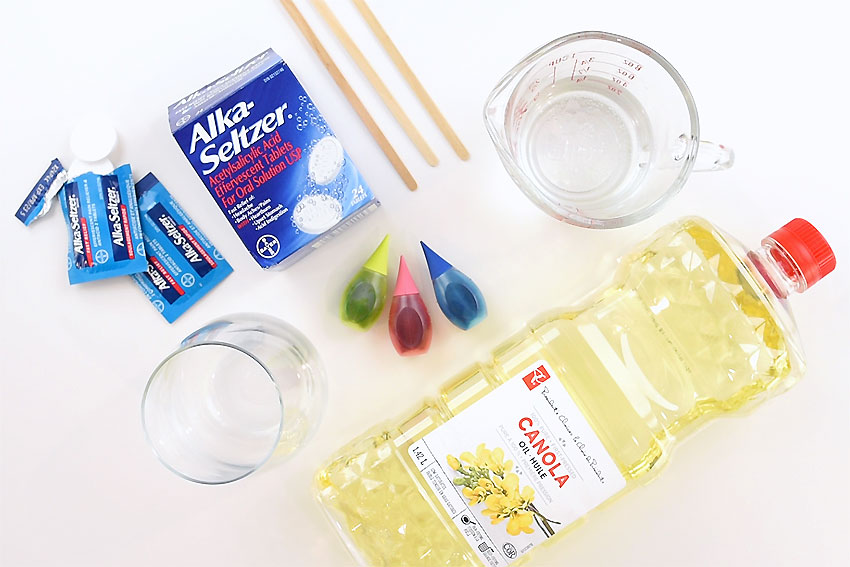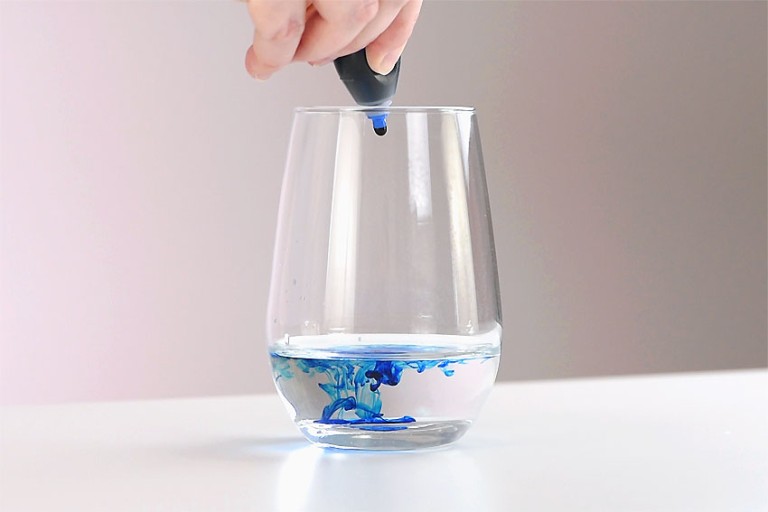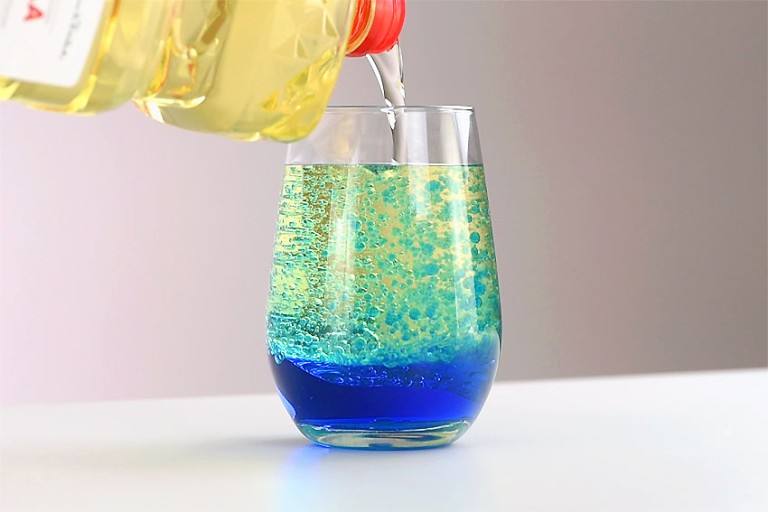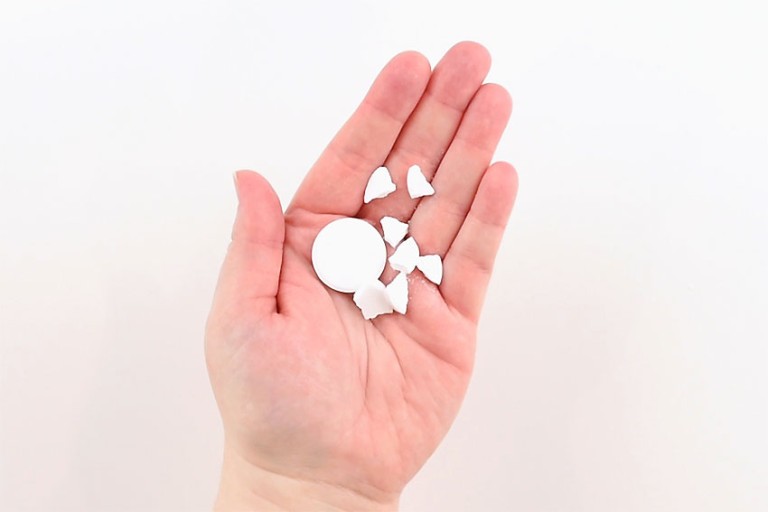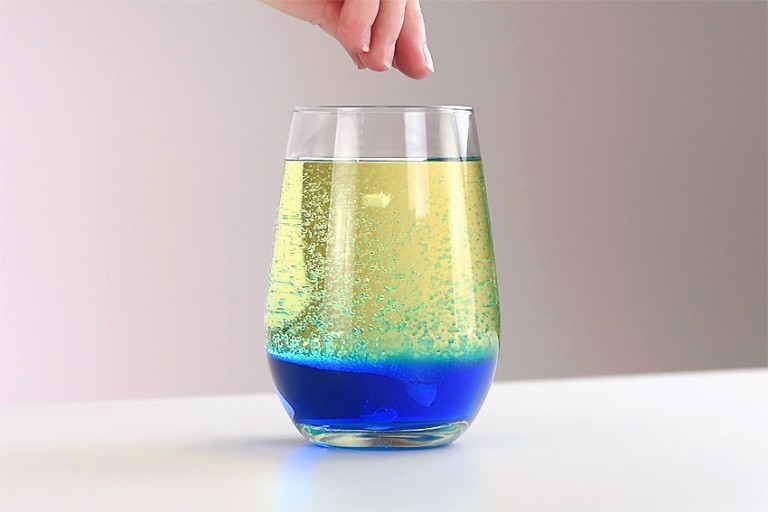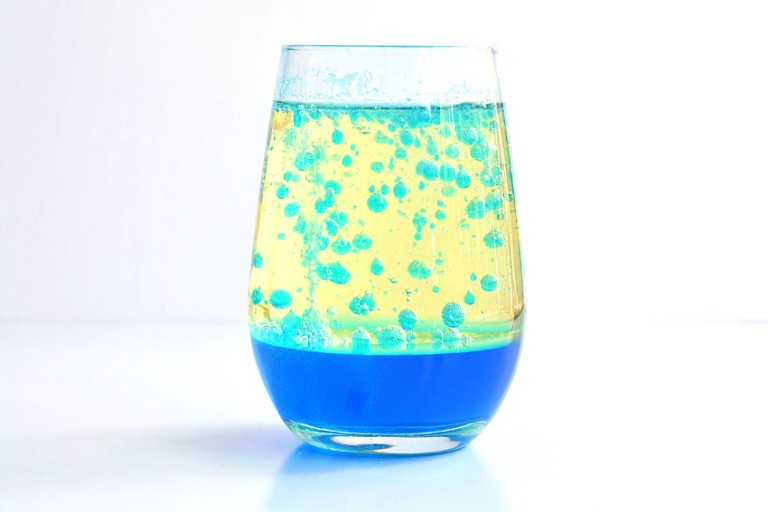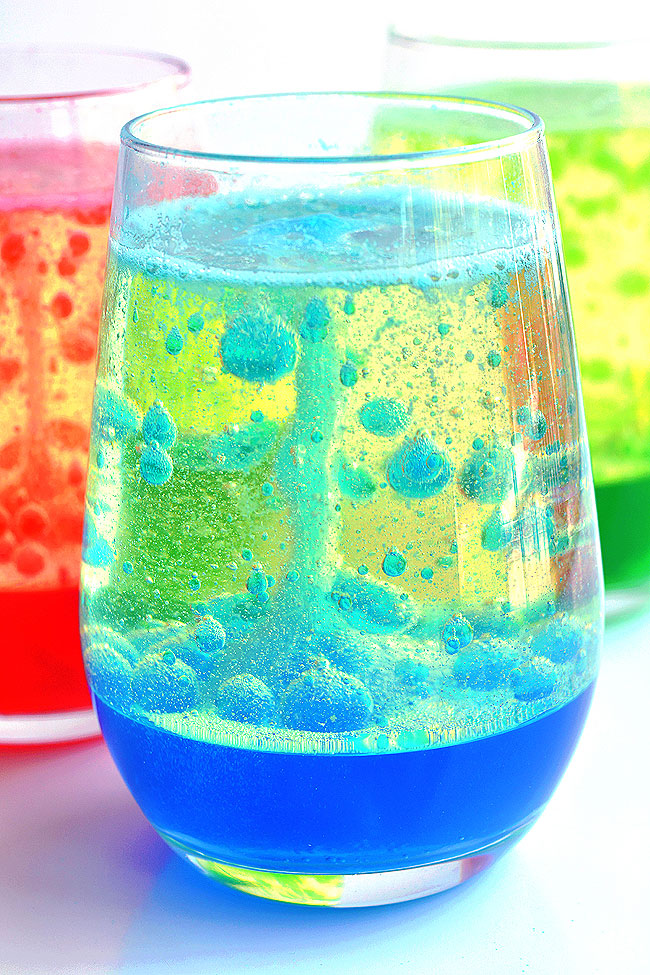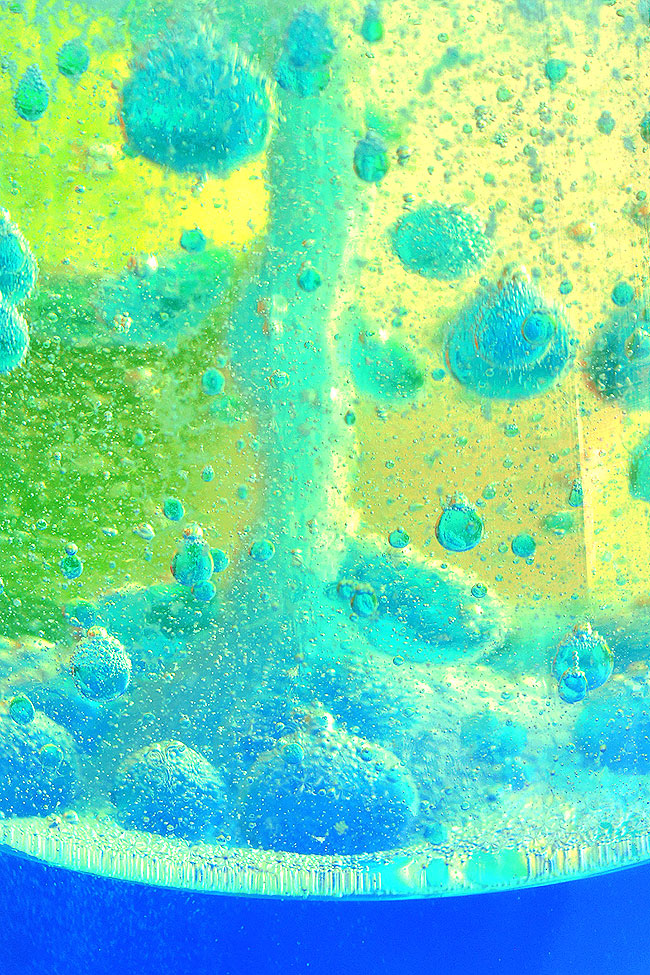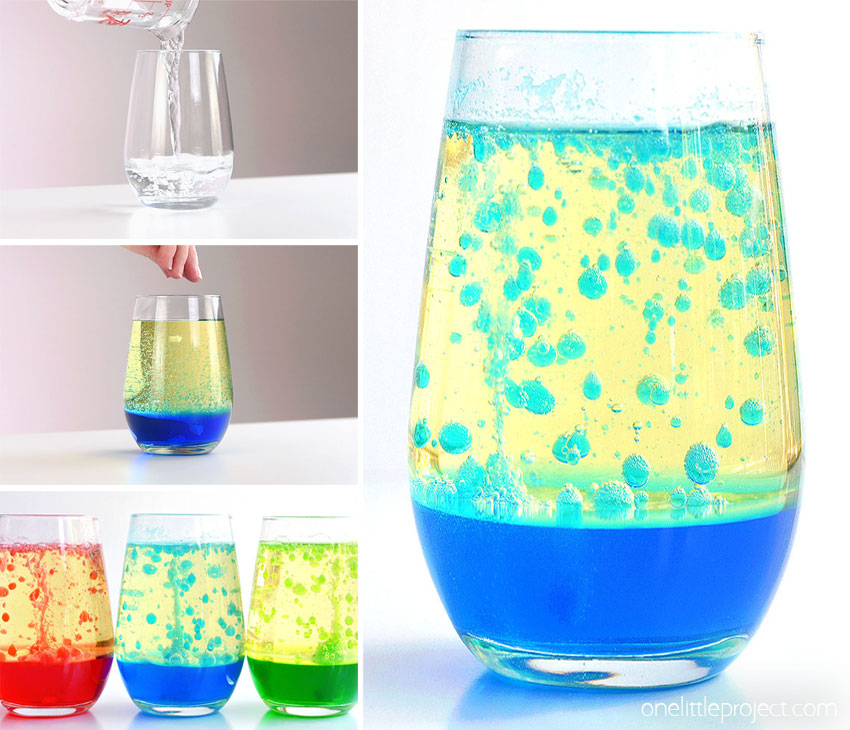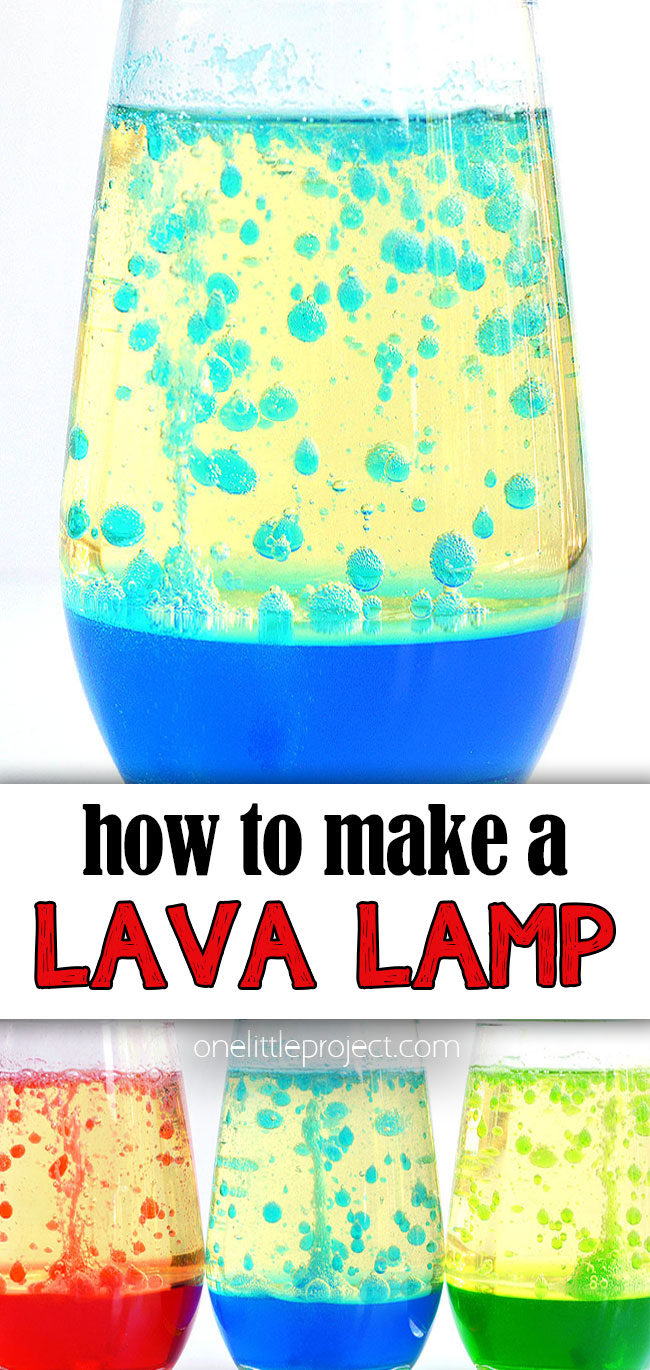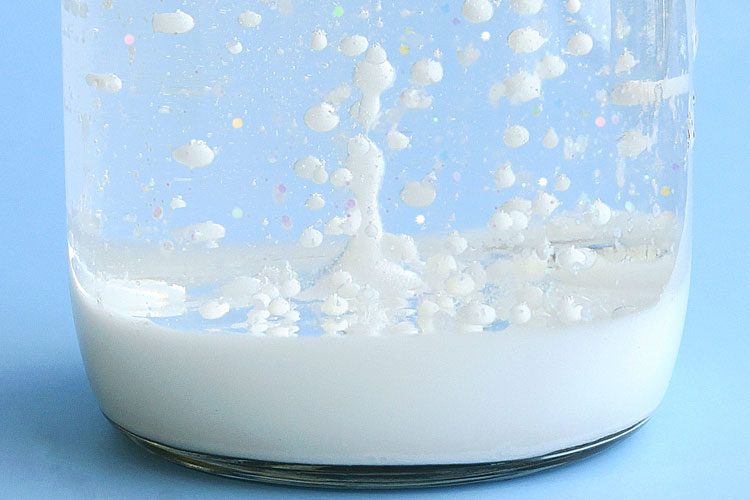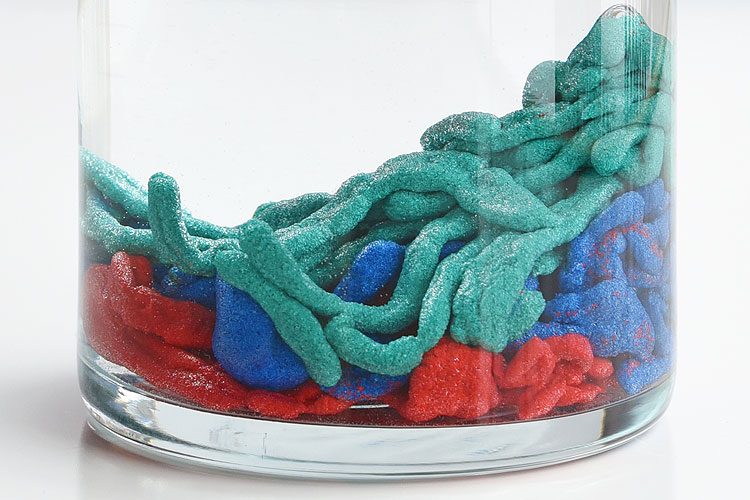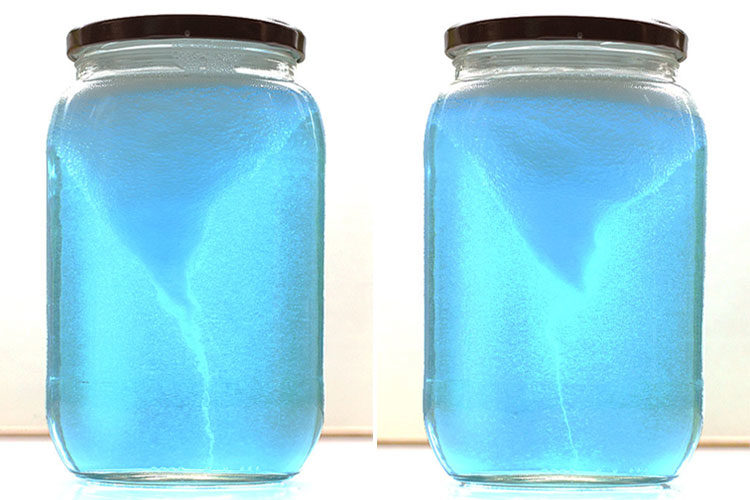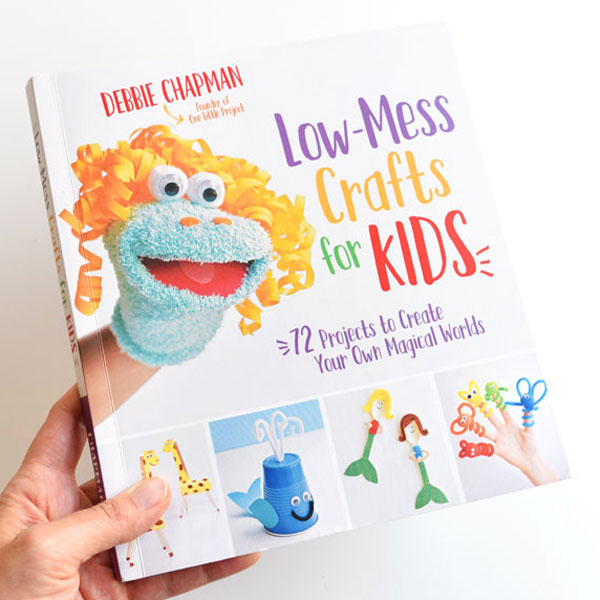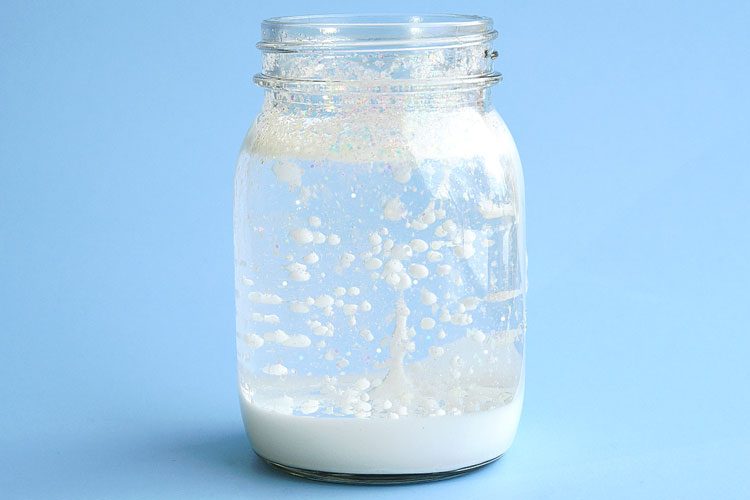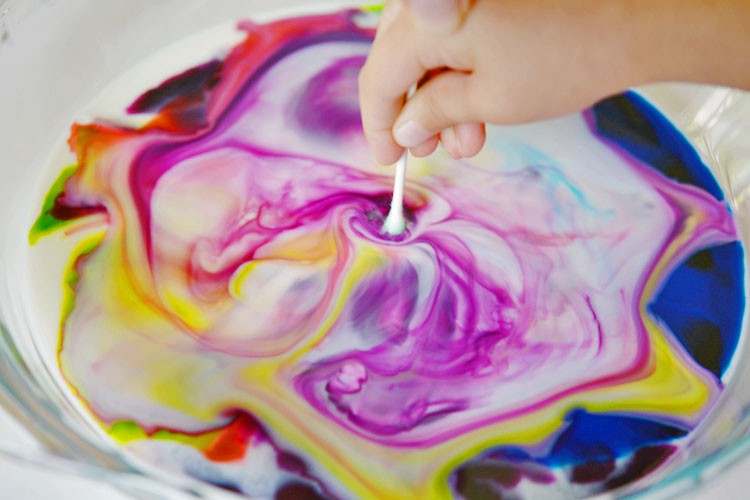DIY Lava Lamp
Lava lamps were created in the 1960’s and have amazed generations of people. The original, store bought lava lamps typically contain water and wax. A light bulb creates heat which melts the wax and causes it to rise. Then when it cools the wax falls down again. But did you know that you can make a different type of lava lamp at home using water, oil, and Alka-Seltzer? They’re really simple to make and just as much fun to watch! It takes only a few ingredients and a couple of minutes to make a DIY lava lamp. Kids and adults alike will love watching the colourful bubbles flow up and down. Have fun watching the bubbles flow while teaching kids about science!
Check out our Homemade Lava Lamp video tutorial:
*Note: Scroll down for the step-by-step photo tutorial.
Snowstorm in a Jar Underwater Magic Sand Tornado in a Jar
Food colouring Canola oil (or vegetable oil) Alka-Seltzer tablets
What oil can I use for a homemade lava lamp?
We highly recommend using canola or vegetable oil in your lava lamp, but you can also use baby oil. We experimented with baby oil (see our Snowstorm in a Jar Experiment for a similar reaction), and even a mixture of baby oil and canola oil. Baby oil is awesome because it makes your lava lamp completely clear instead of yellow. But the bubbles were smaller than the bubbles in the cooking oil. Baby oil is thinner than canola oil which means the bubbles move up and down faster in the baby oil so the “lava” effect wasn’t quite as good. We also noticed that the Alka-Seltzer fizzed up a little bit more in our lava lamps with baby oil, which sometimes made it harder to see the bubbles clearly.
What container is best for a DIY lava lamp?
You will need a tall, clear container such as a drinking glass, mason jar, or soda bottle. We used drinking glasses that held 1-3/4 cups of liquid because they had a cool lava lamp shape to them. I don’t recommend using a large container because it will be more difficult to throw away the oil when you’re done (see the next section on how to clean it up when you’re done). Plus the bubbles are more impressive in a container that’s 2 cups or less. You can also make your lava lamp in a jar or bottle that has a lid. This will allow you to close it off and use the lava lamp again. Make sure the Alka-Seltzer has stopped bubbling before you put the lid on!
How do you clean it up when you’re done?
Oil shouldn’t be poured down the drain since it could clog your pipes. When we were done with our lava lamps we poured the oil into a container with a lid and threw it in the garbage. Be sure to follow your local guidelines for disposing of oil.
How many times can you use the DIY lava lamp?
You can use your homemade lava lamp over and over until it stops reacting with the Alka-Seltzer. We dropped in at least 6 tablets into each of the lava lamps you see in the photos and they were still going strong. By the end of the 6 tablets the oil was a tiny bit cloudy, but we were still getting a good, strong chemical reaction.
How to make a lava lamp without Alka-Seltzer?
Using Alka-Seltzer, oil, and water is the easiest way to make a DIY lava lamp, but you can definitely make a similar chemical reaction without the Alka-Seltzer. The first option is to use baking soda and vinegar. Pour 1 cup of oil and 1/4 cup of of vinegar in your container. Drop the food colouring in. Mix 1 teaspoon of baking soda with 1 teaspoon of water and slowly pour it into the container. You can also make a lava lamp with salt. Fill your container 3/4 full of water, top it up with oil, and then scoop in tablespoons of salt at a time and watch the reaction make bubbles.
What’s the science behind this homemade lava lamp?
The oil sits on top of the water because it is lighter, or less dense than the water. You might have heard the saying “oil and water don’t mix”, which is completely true. Oil is hydrophobic, literally meaning that it fears water. Oil repels, or doesn’t absorb, water, which is why they don’t mix. The Alka-Seltzer tablet contains both an acid (citric acid) and a base (sodium bicarbonate aka baking soda). As the Alka-Seltzer comes into contact with the water the two ingredients react and become a gas: carbon dioxide. The carbon dioxide is lighter than the water and oil, so bubbles rise up, but they bring water droplets with them. As the gas escapes, the bubbles sink back down to the bottom. This creates the lava lamp effect in this experiment.
Homemade lava lamps are such a cool science experiment. You can try different types of oil, different glass shapes and different colours to see what you like best. It’s so much fun to watch the colourful bubbles rise and fall!
Here’s even more science experiment ideas:
Snowstorm in a Jar
Underwater Magic Sand
Tornado in a Jar Our book Low-Mess Crafts for Kids is loaded with 72 fun and simple craft ideas for kids! The projects are fun, easy and most importantly low-mess, so the clean up is simple!
Where to buy:
